

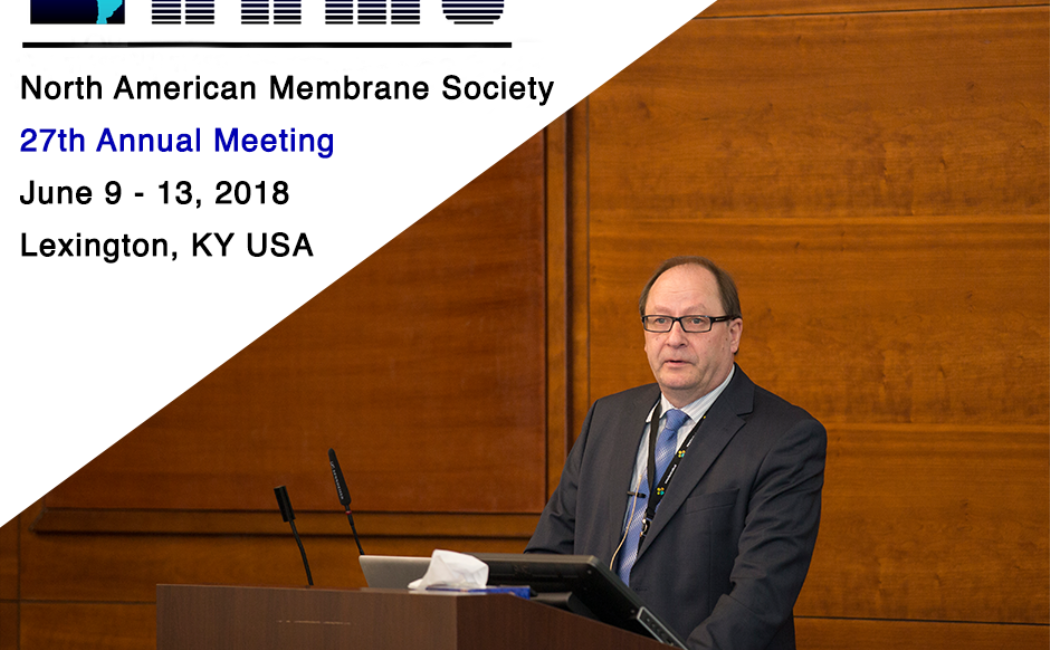
04 July, 2018
AMPM Center members were active at 27th North American Membrane Society (NAMS) annual meeting in Lexington, Kentucky USA hosted by University of Kentucky and King Abdullah University of Science & Technology. NAMS is the premier Membrane Conference in the world bringing together researchers from industry, academia and government. AMPM Center Founding Director Prof. Ingo Pinnau was one of the three meeting chairs.

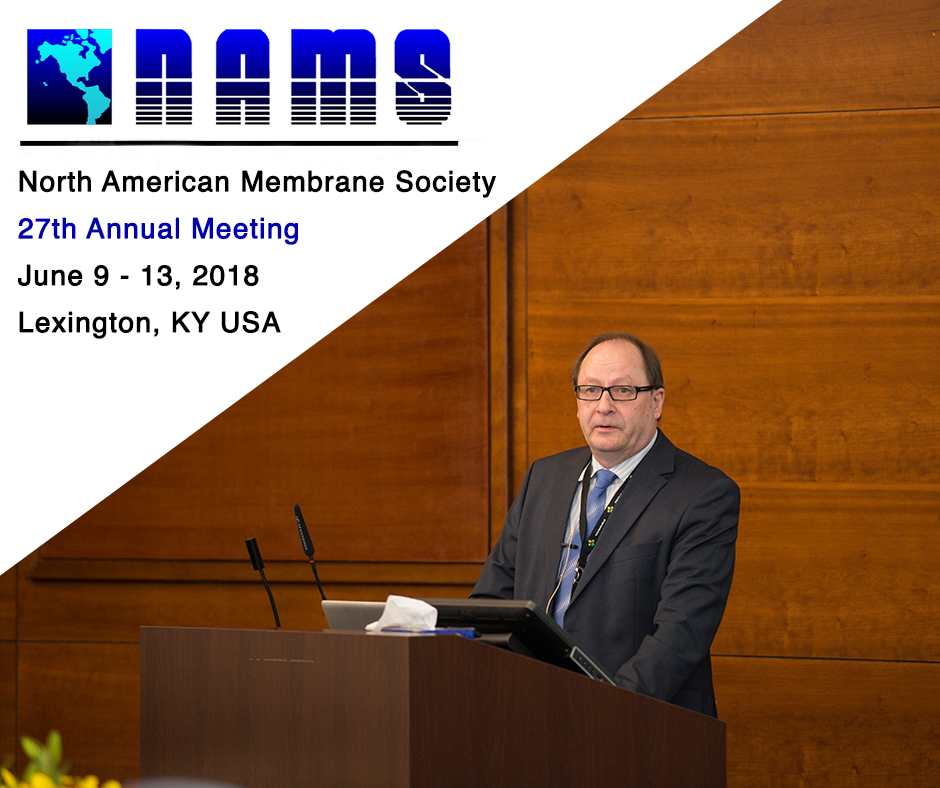
Led by Profs. Klaus-Victor Peinemann, Ingo Pinnau and Zhiping Lai, AMPM Center members showcased projects on membrane processes for natural gas treatment, CO2 capture, hydrogen recovery and water purification.
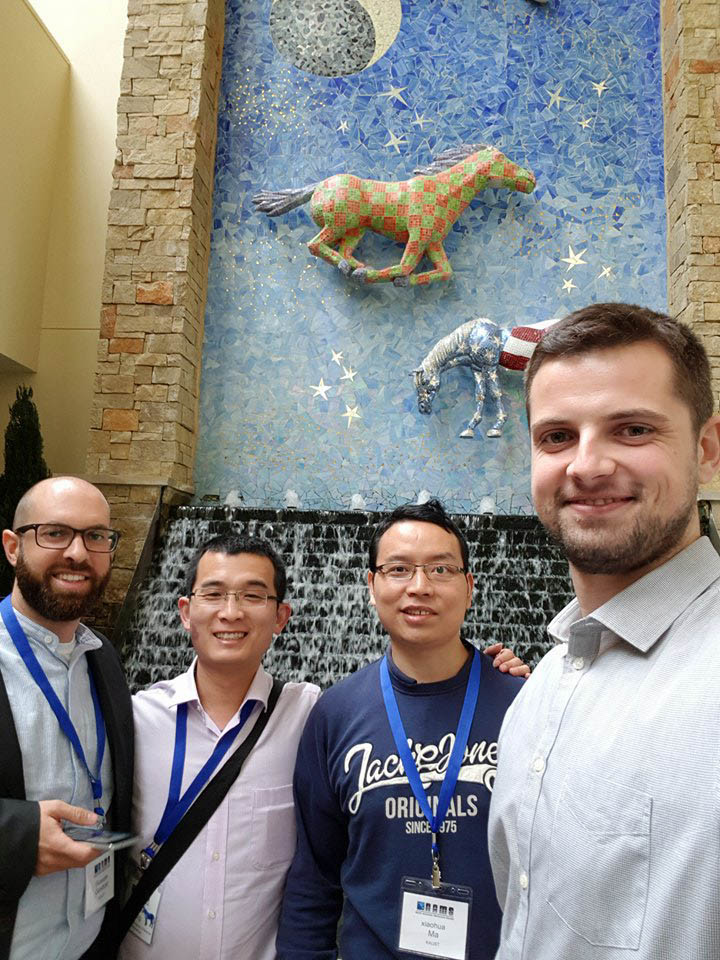
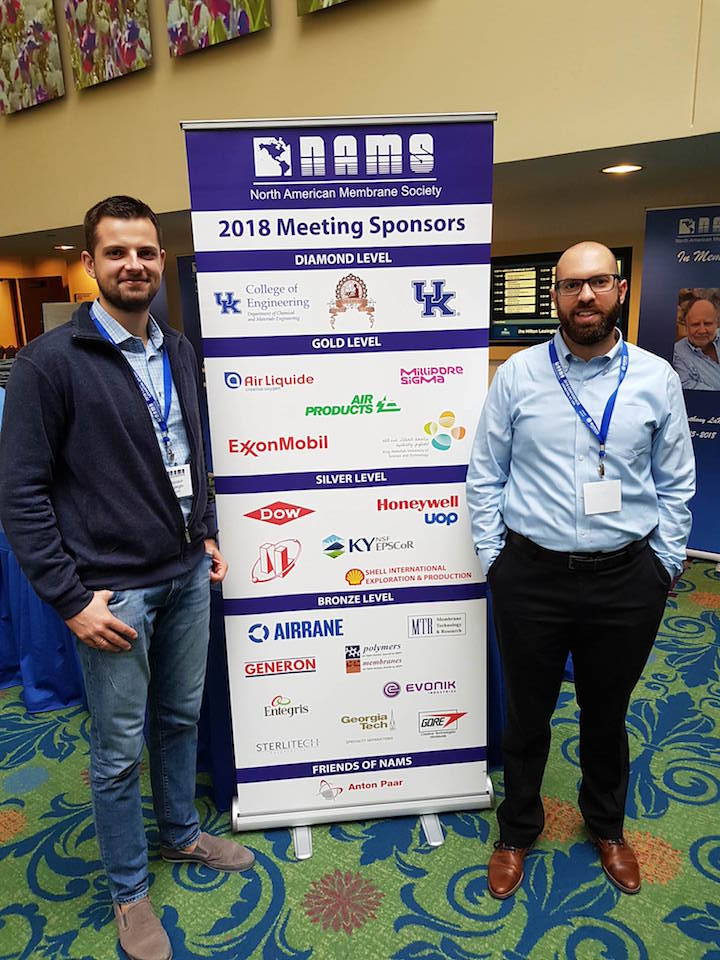


NAMS meeting started with a one day pre-conference workshop on 'Emerging Membrane Materials and Manufacturing Methods' conducted by Profs. Klaus-V. Peinemann and Suzana Nunes from KAUST and Prof. Bruce Hinds from the University of Washington, Seattle, USA. Students, postdocs and industrial researchers attended this workshop to learn more about polymers, graphene, carbon nanotubes and bio-inspired materials science.

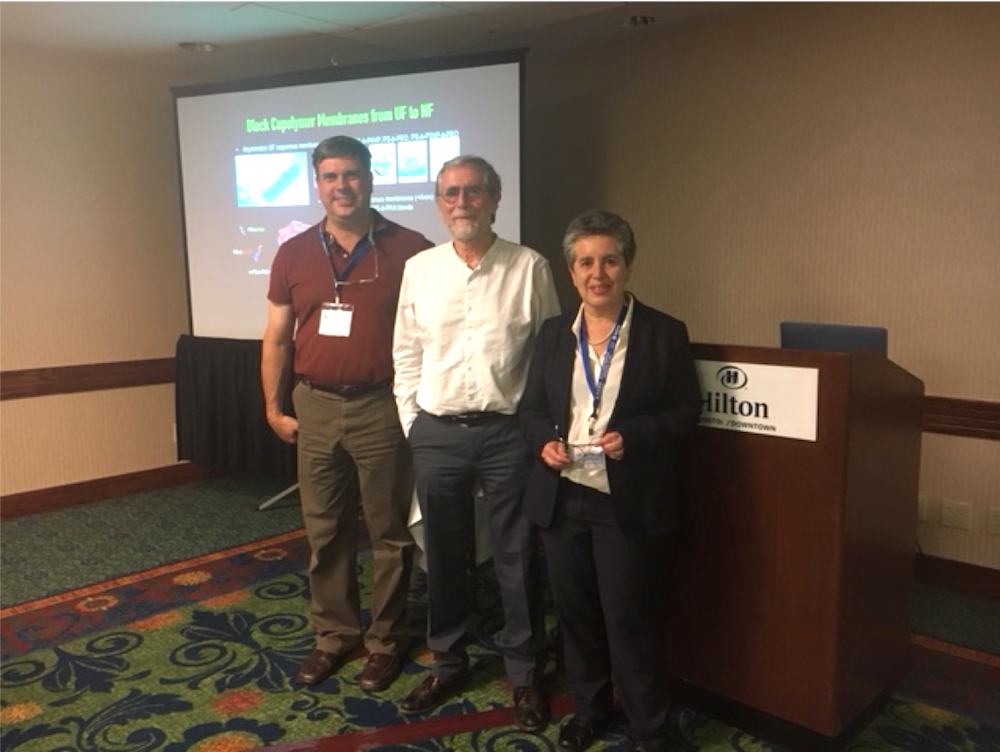 |  |

Rahul Shevate, Ph.D. student of Prof. Peinemann, gave an oral presentation entitled: A surprising pathway to isoporous polystyrene membranes.

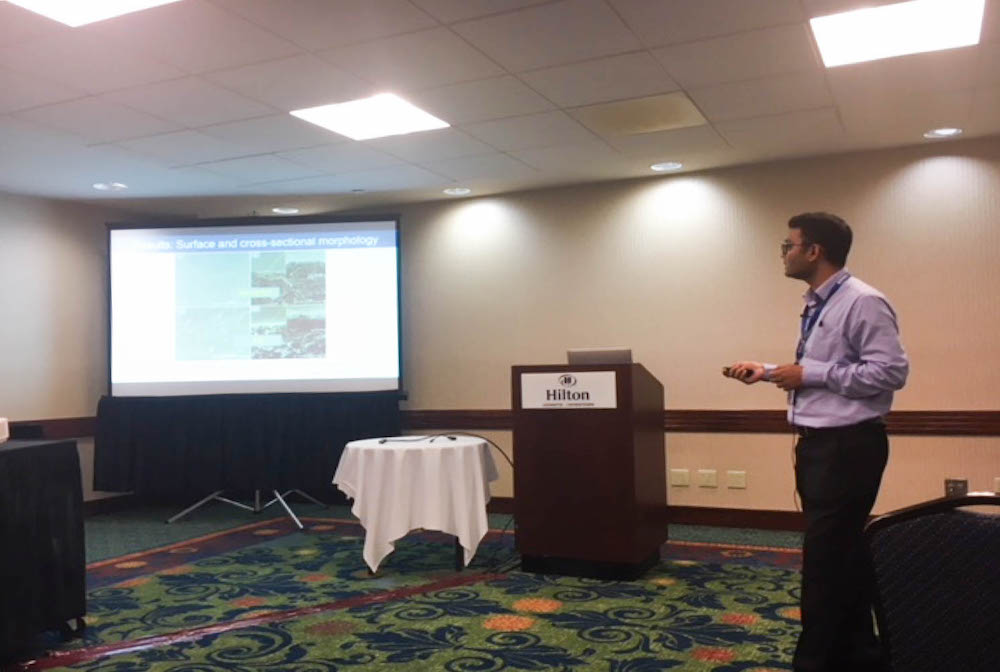
Dr. Xiaohua Ma, Research Scientist, gave a remarkable talk on natural gas sweetening membrane designs and scale-up. "I think the audience was delighted with our research results. Among those in attendance were representatives of our industry partner Evonik and they were very interested in natural gas sweetening and biogas upgrading. The talk was followed by an exciting discussion", he notes.

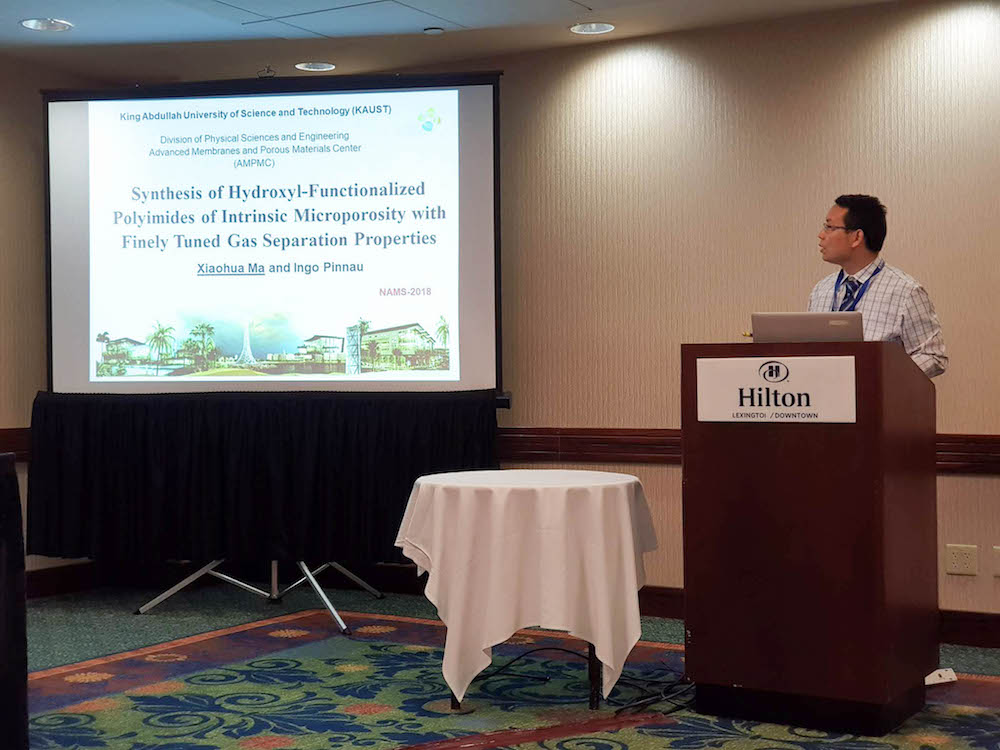
Dr. Wojciech Ogieglo, Research Scientist, presented his work entitled: “Ultra-Thin Composite Carbon Molecular Sieve Membranes from a Polymer of Intrinsic Microporosity Precursor” in the keynote session on Inorganic and Hybrid Membranes.
Prof. Zhiping Lai and his research group also presented. Prof. Las was the chair of “mixed matrix membranes” session and his team member, Dr. Xinbo Wang, gave a talk with a title of “Osmotic Heat Engine Using Thermally Responsive Ionic Liquids”.

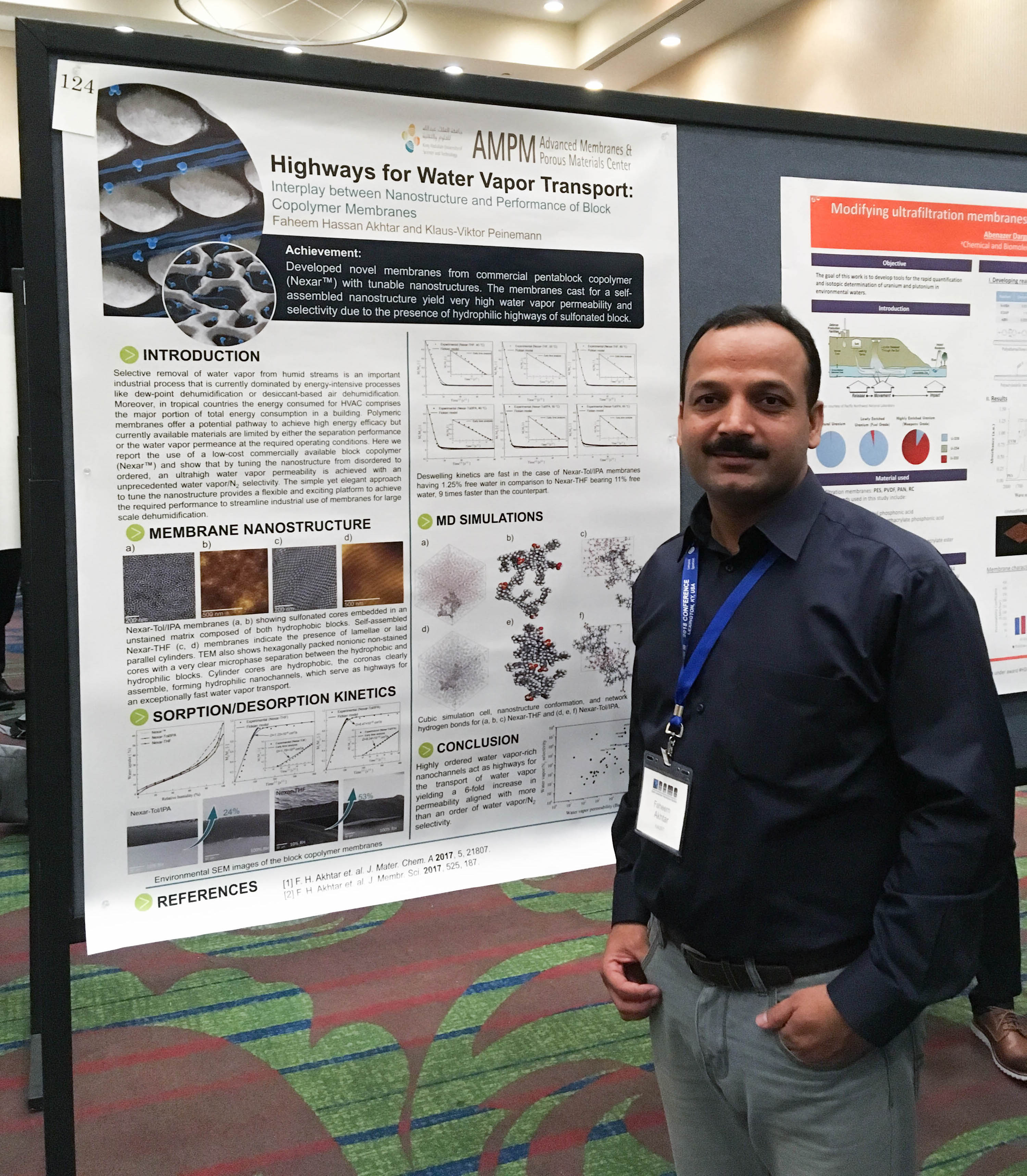 |  |  |

